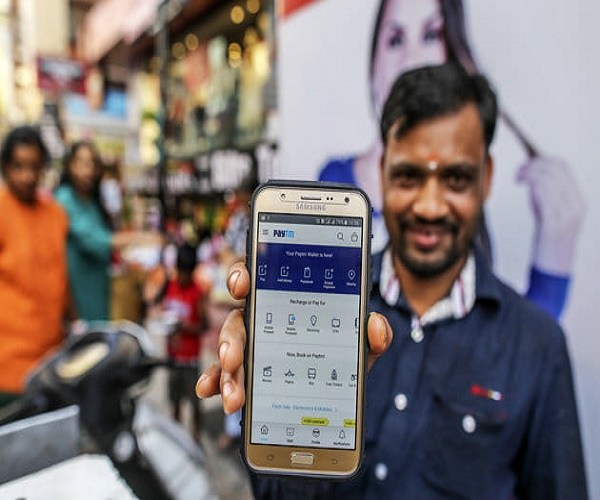Desperate to show progress in the poorly defined, but much-ballyhooed #DigitalIndia initiative, Prime Minister Narendra Modi’s Bharatiya Janta Party-led government inflated e-governance data by designating previously uncategorised services like railway bookings, debit card and credit card transactions, NEFT, RTGS banks transfers, and Aadhaar authentication and e-KYC transactions with private vendors, as “e-governance”.
The government also massively ramping up the weather and crop updates delivered over SMS to millions of farmers in a bid to show rural Indians were embracing so-called digital services.
By adding and subtracting services at will, the Modi government has claimed a 300% uptick e-governance transactions during its tenure, while making it difficult to compare the data with previous years.
Yet these claims are largely hollow, as #KhabarLive found upon checking IT Minister Ravi Shankar Prasad’s claims on the same e-taal platform mentioned in his tweet.
In 2017-18, for the first time, the government even categorised financial flows like NEFT, RTGS, and private and credit card data as a “Service Under Category C” of central projects. The following year, the government dropped NEFT and RTGS, but kept private credit and debit card payments — suggesting there is no logic to this process beyond massaging the numbers.
In 2014-15 a statistical head called “statutory and non-statutory services” accounted for only 26 crore so-called digital transactions in the 2014-15. The e-transactions jumped to 143.23 crores in 2015-16.
The reason? A full 111 crores of this jump came from Aadhaar and e-KYC transactions in a year when the government sought to make Aadhaar mandatory for a variety of services (As an aside, in 2013-14, Aadhaar wasn’t even included as a statutory and non-statutory service). Another 9 crore crore came from categorising all Railway bookings and cancellations — both online, and over the counter — as e-governance transactions for the first time, despite the ticketing services being available since 2002.
Another example comes from the Ministry of Agriculture and Farmers Welfare, where e-governance transactions intended for farmers have grown a staggering 680% from 2013-2014 to the final month of the 2018-19 financial year. This might lead some to believe that India farmers have taken to buying and selling their produce online, and searching for the best prices on the internet.
Sadly, the answer is more prosaic: the Modi government has simply been bombarding farmers with SMSes. The number of farm advisor SMSes sent has risen sharply from 26.8 crores in 2013-14, to 181.5 crore messages in 2018-19 (as measured upto March 1 2019).
Ordinarily, such bureaucratic tallying up of the SMSes and railway bookings and cancellations would simply be just another spreadsheet in a dusty sarkari file. But with elections around the corner, and Modi’s penchant for fudging the banalest of departmental numbers, his ministers have sought to turn any rising data point into an “achievement”.
The fact that the government sought to suppress a jobs report revealing the rate of unemployment to be the worst in 45 years, suggests the link between the “e-governance transactions” and economic growth is tenuous at best.
#KhabarLive sourced all the data used in this story from the government’s e-taal platform and cross-checked it with department level dashboards. Our conclusions were shared with the Ministry of Electronics and Information Technology. The story will be updated if they reply. #KhabarLive







